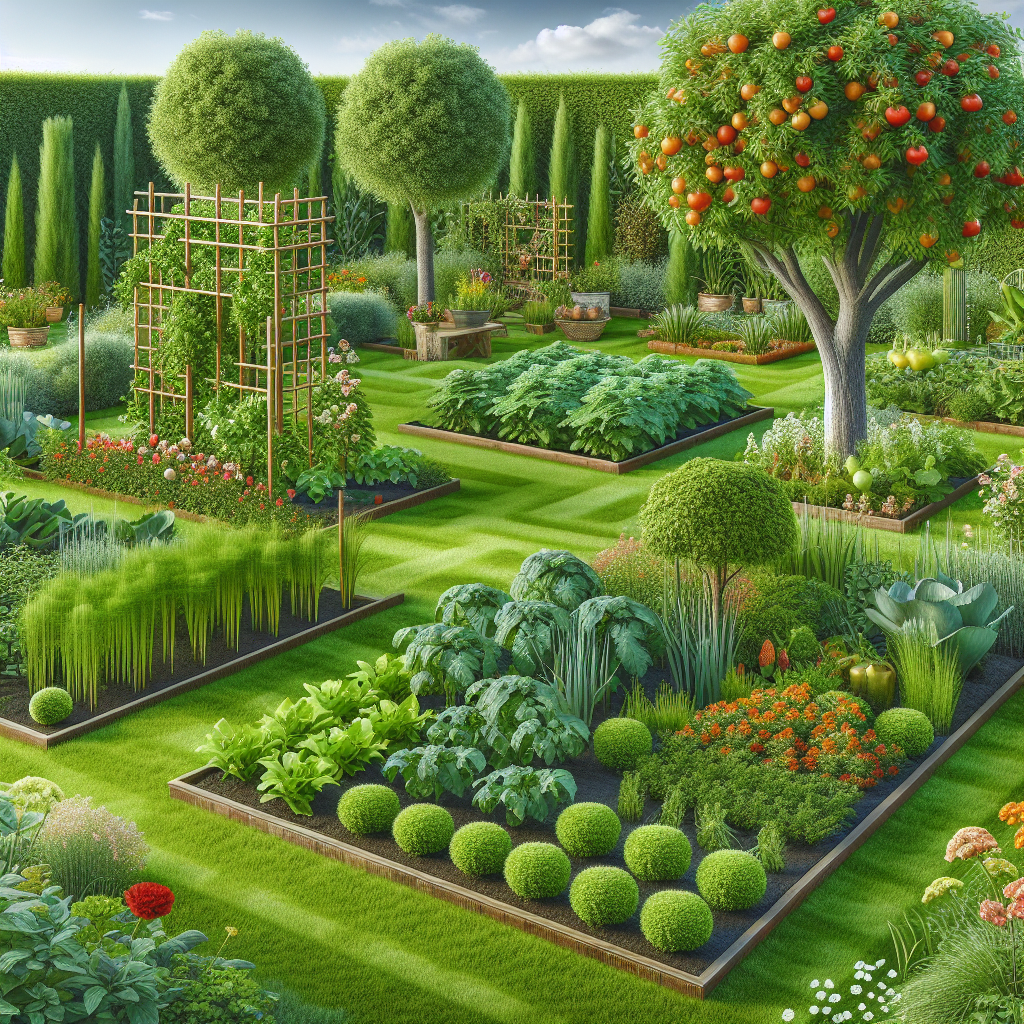In today’s eco-conscious world, the movement towards sustainable living has gained significant traction. One of the most tangible ways to embrace this lifestyle is by incorporating edible gardens into your landscape design. Not only do these gardens provide fresh produce, but they also enhance the beauty of your outdoor spaces. In this article, we’ll explore how to seamlessly blend edible gardens into your landscape, the benefits they offer, and tips for successful implementation.
The Beauty of Edible Gardens
Aesthetic Appeal
When you think of gardens, beautiful floral landscapes may come to mind. However, edible gardens can also be stunning. By selecting a variety of colorful vegetables, herbs, and fruits, you can create a visually appealing space. Imagine vibrant tomato plants, lush basil, and cascading strawberries mingling with traditional ornamental flowers. The juxtaposition of colors and textures can add depth to your landscape design.
Seasonal Interest
Edible gardens offer the benefit of seasonal variation. By planting perennials and annuals, you can enjoy different harvests throughout the year. The stunning array of colors and shapes changes with the seasons, providing constant interest and visual appeal. In spring, freshly sprouted seedlings emerge, while summer brings lush greenery. Fall introduces deep hues as crops mature, and winter can feature hardy greens surviving the chill.
Benefits of Edible Gardens
Fresh Produce at Your Fingertips
One of the most immediate benefits of an edible garden is access to fresh produce. Imagine stepping outside to harvest ripe tomatoes or fragrant herbs just moments before preparing a meal. This connection between the garden and your kitchen enhances your culinary experiences while promoting healthier eating habits.
Environmental Sustainability
Incorporating edible gardens into your landscape is not just about personal gain; it’s also about environmental responsibility. Edible gardens support biodiversity, attract pollinators, and require less water compared to traditional lawns. They also reduce carbon footprints by minimizing the need for transportation associated with store-bought produce.
Cost Savings
Growing your produce can significantly lower grocery bills, especially for high-cost items like organic herbs and vegetables. While there is an initial investment in seeds, soil, and potentially some raised beds, the long-term savings can be substantial. Additionally, the satisfaction of growing your food adds value beyond mere financial savings.
How to Design Your Edible Garden
Assess Your Space
Before planting, evaluate your landscape. Consider sun exposure, soil quality, and available space. Utilize vertical gardening techniques for small areas or containers if space is limited. Don’t forget to think about accessibility for harvesting and maintenance, especially if you’re incorporating your edible garden into an existing landscape.
Choose the Right Plants
Selecting the right plants is crucial for a successful edible garden. Begin with herbs like basil, mint, and rosemary, which are relatively easy to grow and add flavor to many dishes. Next, consider vegetables such as lettuce, radishes, or peppers that can be planted in succession for continual harvest. Fruit-bearing plants like strawberries, blueberries, or dwarf fruit trees can also be visually appealing and productive.
Companion Planting
Companion planting can enhance both the aesthetics and productivity of your edible garden. Certain plants naturally repel pests or attract beneficial insects. For example, marigolds paired with tomatoes can deter aphids, while planting basil alongside peppers can improve their growth. This method promotes a healthy ecosystem and minimizes the need for chemical pesticides.
Maintenance Tips for Your Edible Garden
Regular Watering and Fertilization
Consistent watering is critical for maintaining a thriving edible garden. Depending on your climate, aim to water early in the morning or late in the evening. For fertilization, consider organic compost or slow-release fertilizers to nourish your plants without harming the environment.
Pest Control and Management
Pests can be a concern, but there are numerous eco-friendly pest control methods available. Introduce beneficial insects like ladybugs or use organic sprays if necessary. Regularly inspecting your plants can help you catch problems early, ensuring a healthy yield.
Harvesting and Enjoying Your Bounty
Finally, enjoy the fruits of your labor! Regularly harvest your crops to encourage continued production, and try new recipes that highlight your homegrown ingredients. This connection between gardening and cooking can be incredibly rewarding.
Conclusion: The Future of Sustainable Landscaping
Incorporating edible gardens into your landscape design is a fulfilling journey that intertwines beauty, sustainability, and the joy of homegrown food. By taking the time to plan and implement your garden thoughtfully, you will not only enhance your outdoor space but also contribute positively to the environment and your health.
Embrace this opportunity to merge gardening with landscaping, and create a sanctuary that nourishes both body and soul. In doing so, you join a growing community of gardeners committed to sustainable practices and the joys of fresh produce right from their backyards. Happy gardening!


